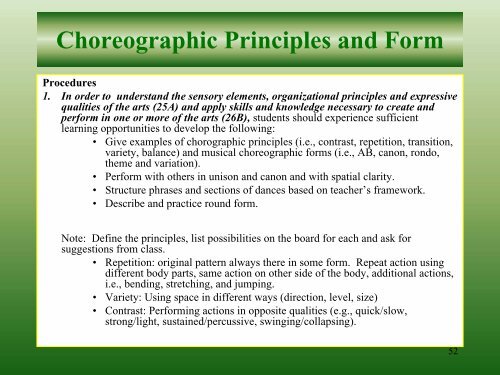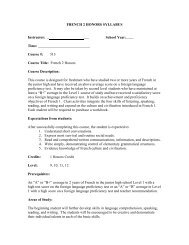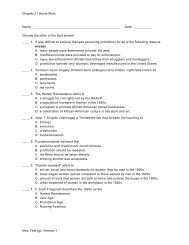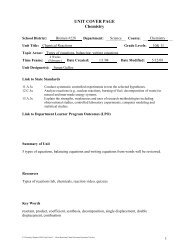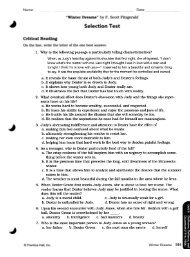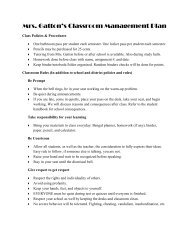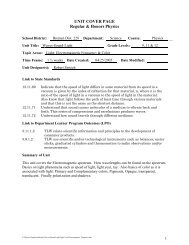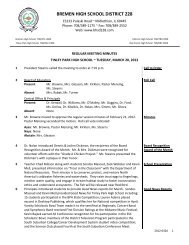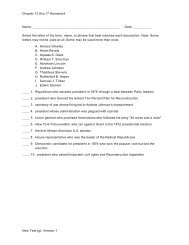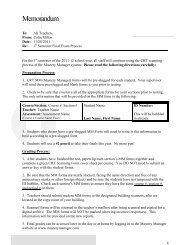Fine Arts Performance Descriptors and Classroom Assessments
Fine Arts Performance Descriptors and Classroom Assessments
Fine Arts Performance Descriptors and Classroom Assessments
Create successful ePaper yourself
Turn your PDF publications into a flip-book with our unique Google optimized e-Paper software.
Choreographic Principles <strong>and</strong> Form<br />
Procedures<br />
1. In order to underst<strong>and</strong> the sensory elements, organizational principles <strong>and</strong> expressive<br />
qualities of the arts (25A) <strong>and</strong> apply skills <strong>and</strong> knowledge necessary to create <strong>and</strong><br />
perform in one or more of the arts (26B), students should experience sufficient<br />
learning opportunities to develop the following:<br />
• Give examples of chorographic principles (i.e., contrast, repetition, transition,<br />
variety, balance) <strong>and</strong> musical choreographic forms (i.e., AB, canon, rondo,<br />
theme <strong>and</strong> variation).<br />
• Perform with others in unison <strong>and</strong> canon <strong>and</strong> with spatial clarity.<br />
• Structure phrases <strong>and</strong> sections of dances based on teacher’s framework.<br />
• Describe <strong>and</strong> practice round form.<br />
Note: Define the principles, list possibilities on the board for each <strong>and</strong> ask for<br />
suggestions from class.<br />
• Repetition: original pattern always there in some form. Repeat action using<br />
different body parts, same action on other side of the body, additional actions,<br />
i.e., bending, stretching, <strong>and</strong> jumping.<br />
• Variety: Using space in different ways (direction, level, size)<br />
• Contrast: Performing actions in opposite qualities (e.g., quick/slow,<br />
strong/light, sustained/percussive, swinging/collapsing).<br />
52


